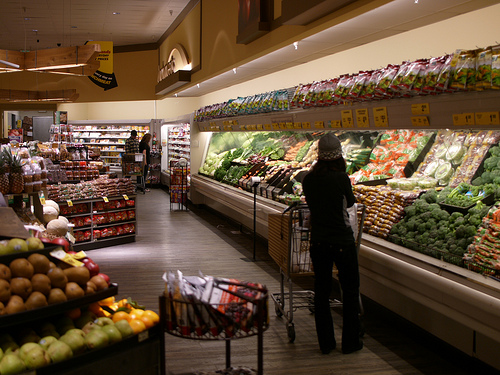Cheating on your "locally grown" diet

I read this recent New York Times article with a mixture of chagrin and relief. At least I'm not the only one who's cheating on their "locally grown" diet this time of year. It turns out that a lot of restaurants and small bistros which specialize in locally grown food also have to cheat as their winter stores grow thin. (Or, as is the case with one particularly hard-core restaurant in Washington, just close up shop for December and January.)
And I'm lucky! I live in a rural area north of Seattle, surrounded by agriculture, where locally grown produce is available for about nine months out of the year. Or year round, if you consider hothouse tomatoes from Vancouver, B.C. (which I do - it's within my 100-mile food radius).
The idea of keeping to a strict 100-mile diet was always something of a pipe dream, of course. Even if you are lucky enough to live in a fertile growing region as I do, rather than, say, Arizona. There is a lot that I can eat within 100 miles, but that list is notably missing most of your basic spices (salt, pepper, cinnamon, ginger, sriracha, curry paste) and cooking staples (olive oil), not to mention coffee.
And if you want a balanced diet, you should eat as many different kinds of fruits and vegetables as possible, so they tell us. A sensible edict that is at odds with what can be found inside the foodshed of most people in America. I don't know what I would do without bananas, oranges, grapes, kiwi fruits and all the other delicious, affordable and easily available tropical fruits grown so far from my home.
I do try to buy as much locally produced food as possible, in order to support my neighbors and community, as well as reducing my carbon footprint. And I applaud people who are better at sticking to their 100-mile diet than I am. But it's February, and I am getting pretty tired of root vegetables, too.
Image courtesy of Flickr/mliu92

1 comments